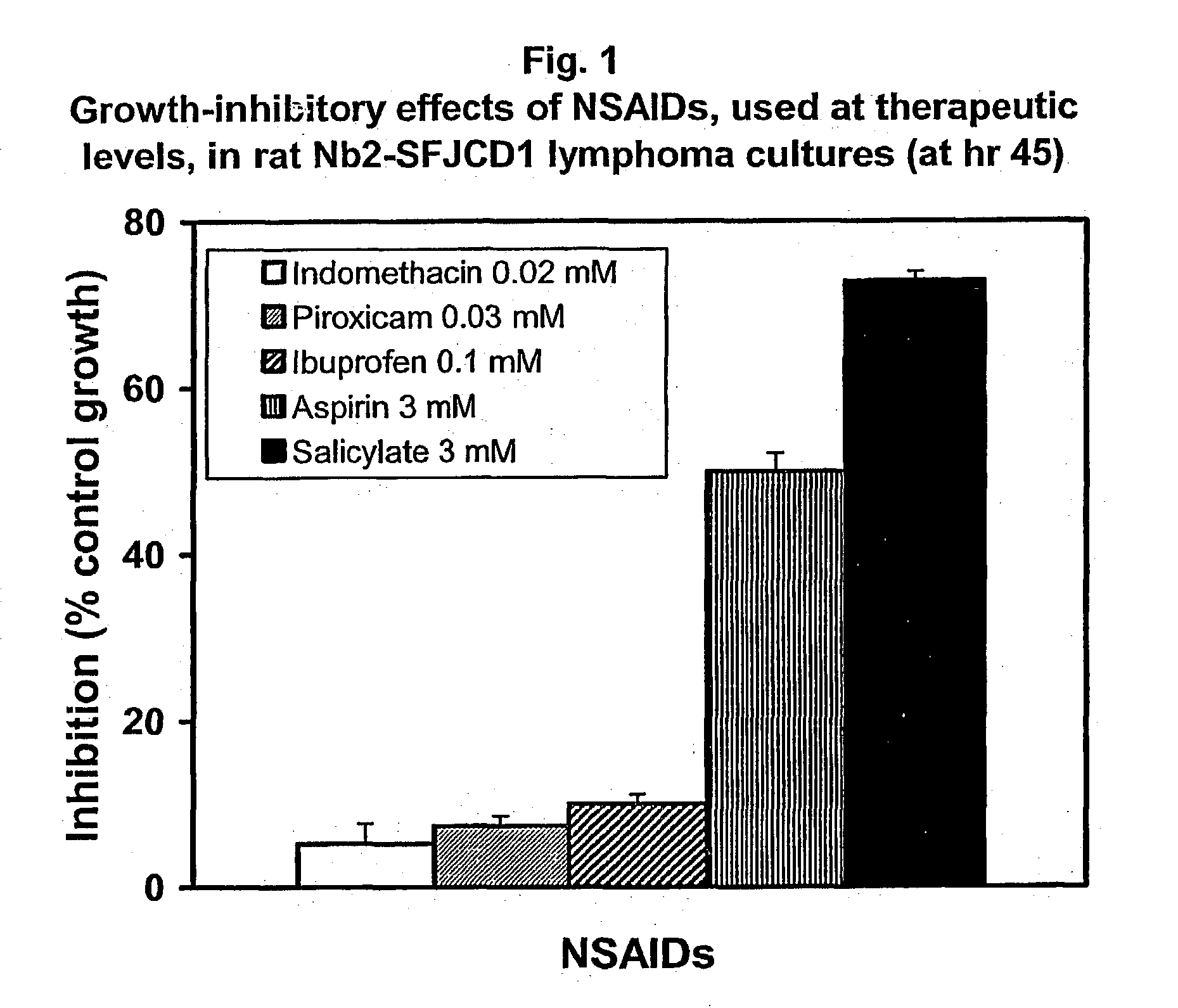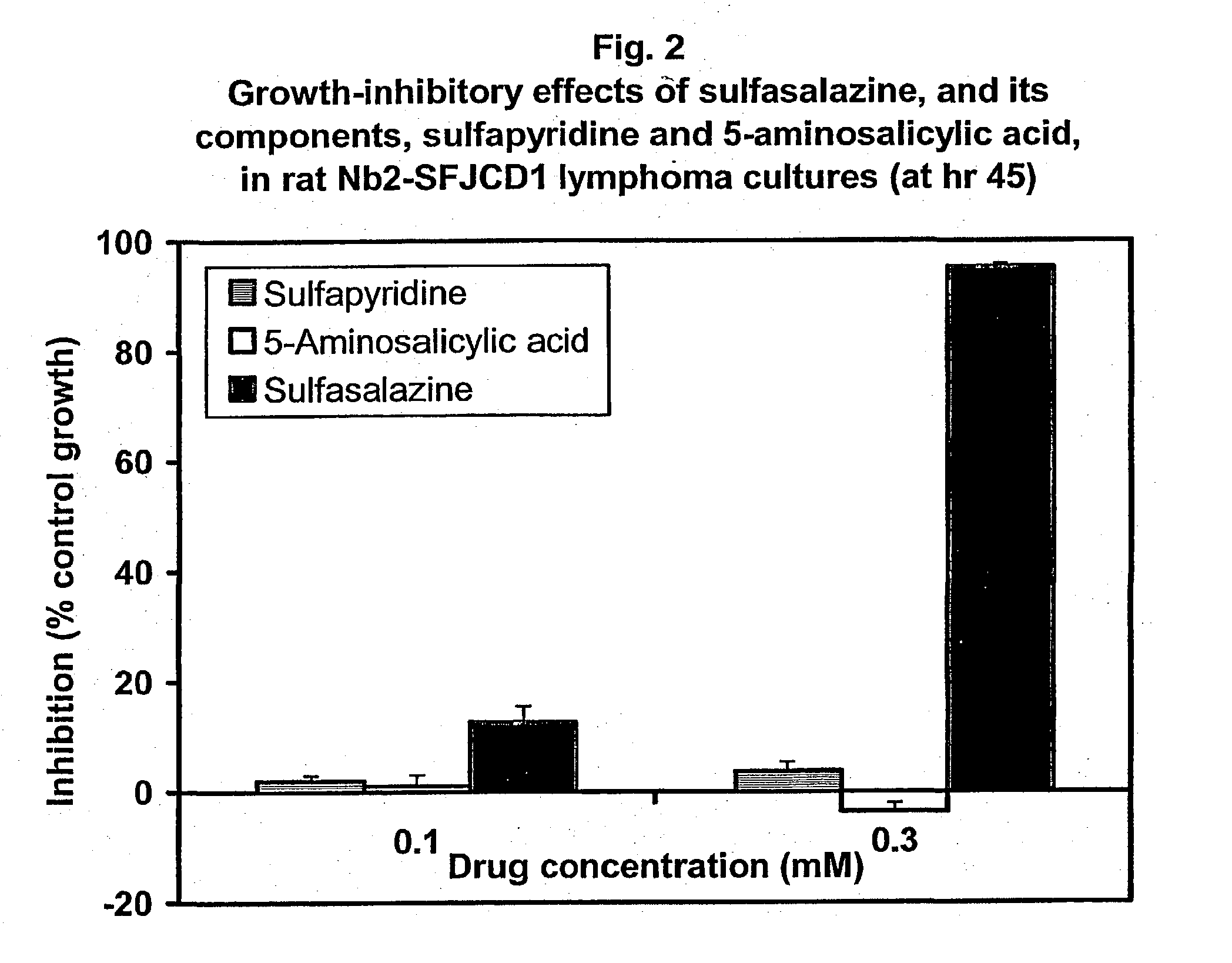Use of n-heterocyclic substituted salicylates for inhibition of cellular uptake of cystine
a technology of n-heterocyclic and salicylate, which is applied in the direction of biocide, drug composition, aerosol delivery, etc., can solve the problems of low uptake capability of cystine, no anti-cancer effect of such compounds, and no useful effect of sulfasalazine, etc., to increase the effectiveness of individual therapies and avoid oxidative stress
- Summary
- Abstract
- Description
- Claims
- Application Information
AI Technical Summary
Benefits of technology
Problems solved by technology
Method used
Image
Examples
example 2
[0071] Assessment and Treatment of Cys.sup.- Cancer Cells
[0072] A study was conducted to determine whether estrogen-receptor positive MCF-7 or the highly progressed, receptor negative MDA-MB-231 human breast carcinoma cell lines express the x.sub.c.sup.- transporter and whether such cells are susceptible to treatment with sulfasalazine. Using an RT-PCR assay to screen for expression of a x.sub.c.sup.-protein, each of the cell lines was found to express the transporter, with higher levels observed in the MDA-MB-231 line. The effect of sulfasalazine on cell proliferation was subsequently assessed. Sulfasalazine, but not its colonic metabolites, inhibited growth of each cell line in a concentration-dependent manner with an IC.sub.50 of 0.5.+-.0.1 and 0.3.+-.0.005 mM for MCF-7 and MDA-MB-231 cells, respectively. Addition of 2-ME (60 .mu.M, completely antagonized the inhibitory actions of sulfasalazine in MDA-MB-231 cells, while the thiol was only 50% effective as an antagonist in the MC...
PUM
| Property | Measurement | Unit |
|---|---|---|
| molecular weight | aaaaa | aaaaa |
| molecular weight | aaaaa | aaaaa |
| pH | aaaaa | aaaaa |
Abstract
Description
Claims
Application Information
 Login to View More
Login to View More - R&D
- Intellectual Property
- Life Sciences
- Materials
- Tech Scout
- Unparalleled Data Quality
- Higher Quality Content
- 60% Fewer Hallucinations
Browse by: Latest US Patents, China's latest patents, Technical Efficacy Thesaurus, Application Domain, Technology Topic, Popular Technical Reports.
© 2025 PatSnap. All rights reserved.Legal|Privacy policy|Modern Slavery Act Transparency Statement|Sitemap|About US| Contact US: help@patsnap.com



